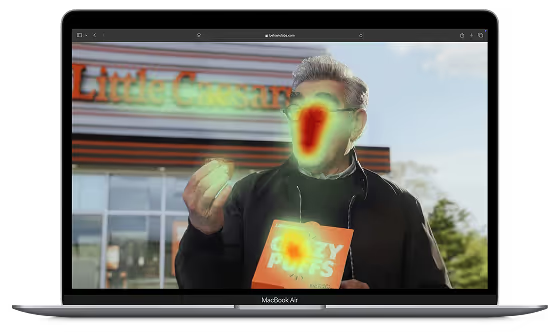Don’t hire Shakespeare to write ads for you—the narrative structure of classical drama, which builds tension up to a climax (or “catastrophe”), may not be well-suited for advertising.
In its ABCD framework, Google suggests that the classic slow-burning narrative doesn't play out well on YouTube. Instead, they champion a rapid-fire approach: start with strong emotion and unmistakable branding.

Amazon: The traditional story arc doesn’t work
Last Christmas, Amazon took a traditional approach with their ad campaign. It began with a mysterious trek through a forest (0-10s), followed by the gradual unveiling of a Red Riding Hood figure (10-20s), and culminated in a comedic twist featuring the Big Bad Wolf (20-30s).
Despite the engaging narrative, Behavio's ad testing revealed that while the ad was amusing and memorable, it failed to leave a lasting brand impact. But why?

You can watch Behavio's second-by-second analysis of the Amazon ad here.
The short answer: people don’t stick around for the climax. Viewers’ emotional engagement was low in the ad’s early stages, which also meant low attention.
Remember, emotions drive attention—a crucial component of effective advertising. Research shows that dwell times for ads are under 2 seconds for digital formats and less than 14 seconds for a 30-second TV spot. Not ideal for a slow-burn story arc.
Febreze: Begin with high emotion & branding
Now, let’s take a look at Febreze’s ad campaign. It might not be an award-winner in the creative department, but its quick, “heartbeat” narrative structure was a hit.
The ad efficiently demonstrated various usage scenarios, repeated the word “fresh” five times, and prominently displayed the brand name and logo multiple times.
Despite the repetition, viewers weren’t bored. Instead, they found the relatable, humorous situations engaging from start to finish.
This high engagement, combined with strong brand and message recall throughout the ad, lead to an exceptional brand lift.

You can watch Behavio's second-by-second analysis of the Amazon ad here.
The takeaway? Start strong with both emotion and branding. Maintain momentum with several emotional peaks, and intersperse brand cues throughout. Don’t worry too much about a grand finale—most viewers are already gone by then!
And if you’d like to learn more about effective ad story arcs, you can watch our recent webinar – with many more tips and case studies.











.avif)








